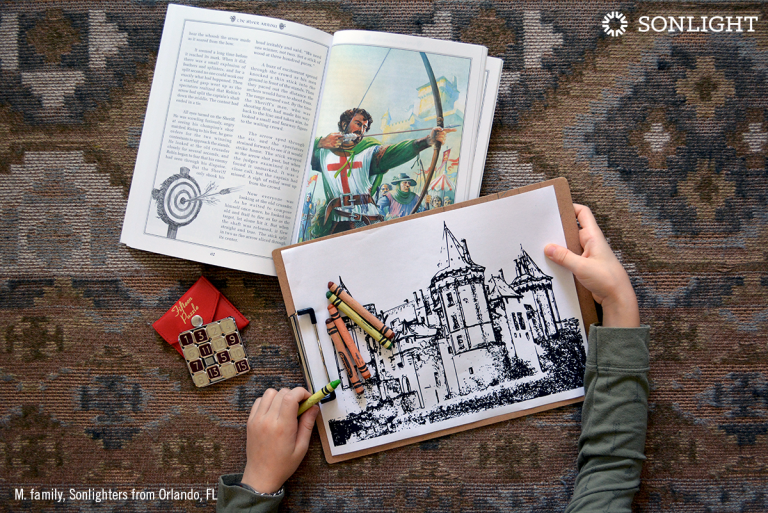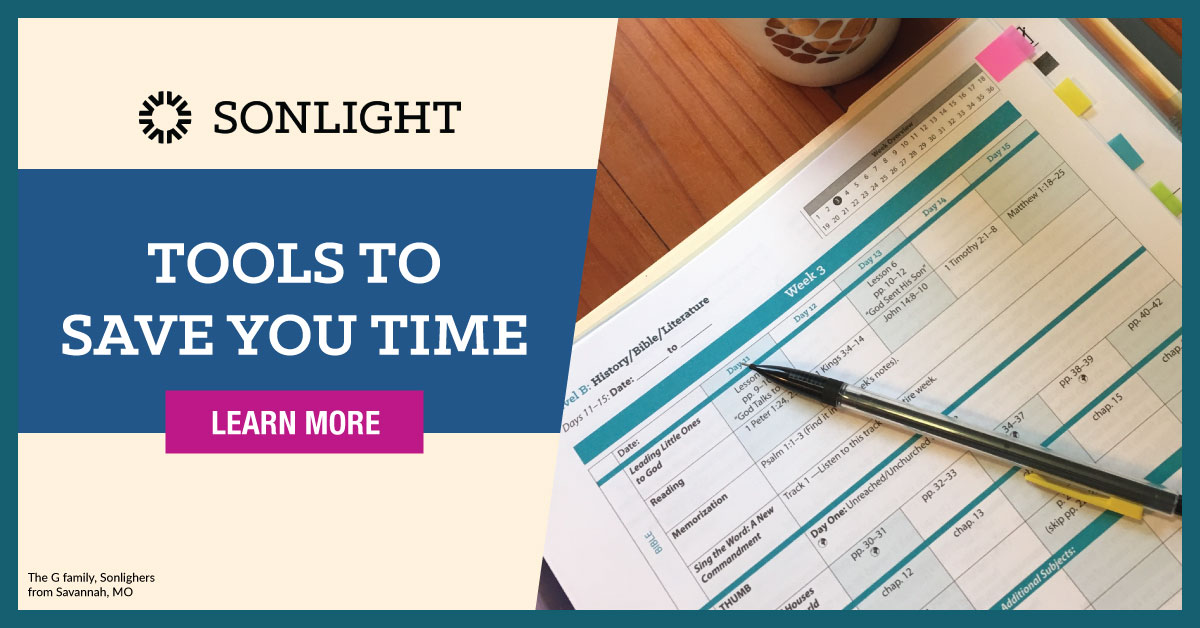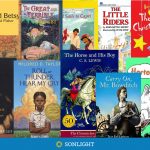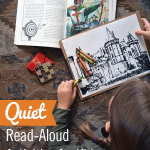
Read-alouds are one of the pillars of a literature-based education. But what happens when no one really settles down when you start reading? If you’ve ever interrupted a read-aloud with the words, “Sit still!”, this list is for you.
Keeping children’s hands busy is often the key to allowing their minds—and bodies—to calm down long enough to focus on auditory input. There’s something very restful and therapeutic about working with your hands while taking in enjoyable audio. In our home, we look forward to our Sonlight Read-Alouds not just because Sonlight books are so carefully chosen, but also because of the fun projects we’ve worked into our routine. Here are some of our family’s favorite read-aloud activities.
1. Sculpt Clay or Play Dough
While littles are content to use play dough with no overarching motive, older kids might enjoy something with a purpose, such as using modeling clay to sculpt figures that connect to the Read-Aloud’s theme. This isn’t a couch activity, but if you don’t want to sit around the table either, kids can sit on the living room floor with their sculpting material contained to serving trays or cookie sheets.
2. Stamp into a Notebook
Have a plastic bin of stamps leftover from your scrapbooking days? Pick up some inexpensive ink pads, and let kids fill notebooks with patterns and designs while you read. (And, yes, someone will probably press their face or hand into the stamp pad. Or do things like that only happen at our house?)
3. Fold Clean Laundry
This isn’t time to be running around the house tucking clean clothes into dressers, obviously. But read-aloud time is perfect for a simple tasks like folding a basket of towels. Even young children can help sort a pile of mismatched socks.
4. Use Twiddles and Fidgets
There are lots of silent items kids can manipulate with their hands while listening to you read. Think cubes, flexible wooden puzzles, marble fidgets, or stress balls (you can even make one by pouring corn starch into a balloon).
5. Color Related Images
Getting out the crayons is easy enough, especially when you just grab from the stash of coloring books. But using historical coloring books which correlate with what you’re learning—or printing off a stack of related images—will bring your Read-Alouds to especially vibrant life. (As an adult, I still color from time to time. When I see the page later, I always remember what I was listening to when I colored it.)
6. Create Modified Lapbooks
About once a week before our history Read-Aloud, I’ll print out a selection of images and maps, and three-hole punch some colored cardstock. While I read, my daughter cuts, colors, and glues however she desires. After, she often jots down her favorite aspect of the day’s reading, and glues it onto the page, to be added to our history binder.
7. Draw or Doodle
Not every child enjoys cutting or coloring. But those who don’t wish to break out the markers and crayons might still enjoy access to plain paper and drawing supplies, so they can create elaborate scenes, intricate patterns or story illustrations while you’re reading. Stencils are a huge hit in our house, too.
8. Assemble a Jigsaw Puzzle
This activity works best if you’re able to leave the puzzle out in a dedicated area, so you can continue adding to it each time you sit down to read. But smaller, individual puzzles can work as well. You can even keep them separated by using trays or cookie sheets, just like for the modeling clay. (Have you seen the astronomy and geography puzzles?)
9. Knit or Crochet
If you have beginners, knitting or crocheting wouldn’t make a great read-aloud activity. Who wants to keep stopping mid-story to reattach errant yarn or untangle a knot? But once your little artisans have reached proficiency, this can be a wonderfully productive Read-Aloud pastime.
10. Build LEGO Bricks or K’Nex
Quiet building can be a wonderful backdrop to an afternoon of read-alouds. Extra bonus points if your kids accept the challenge to build a scene related to what you’re reading!
11. Eat Snacks
This is a favorite read-aloud activity in our home. Yours, too? By the time we open the Read-Alouds mid-afternoon, everyone is more than ready for a protein pick-me-up.
12. Construct a Diorama or a 3-D Structure
If you don’t mind a big, crafty mess, creating a diorama or a three-dimensional model can be a ton of fun. The key to making this work during a read-aloud is to have all the needed supplies—scissors, cardboard boxes or poster board, glue, twigs, clay, toothpicks, straws, paper, cotton balls, markers, and more—already set out ahead of time. (If you’re an especially hands-on family, you might like the Hands & Hearts activity kits.)
Not everyone learns the same way, of course, but in our home, I’ve found that comprehension, retention, and focus are all consistently improved on the days I allow some sort of activity while I read aloud. I’m so thankful for the flexibility of homeschooling, which lends itself so wonderfully to these creative pursuits.
Try three weeks of any Instructor's Guide for free and see what Sonlight Read-Alouds are like. Click here to get one for any level, preschool through twelfth grade.










I often read while my kids eat breakfast and/or lunch just so I know that they're busy enough to keep still but quiet enough to listen. Great suggestions.
Books and breakfast -- what a marvelous combination! <3